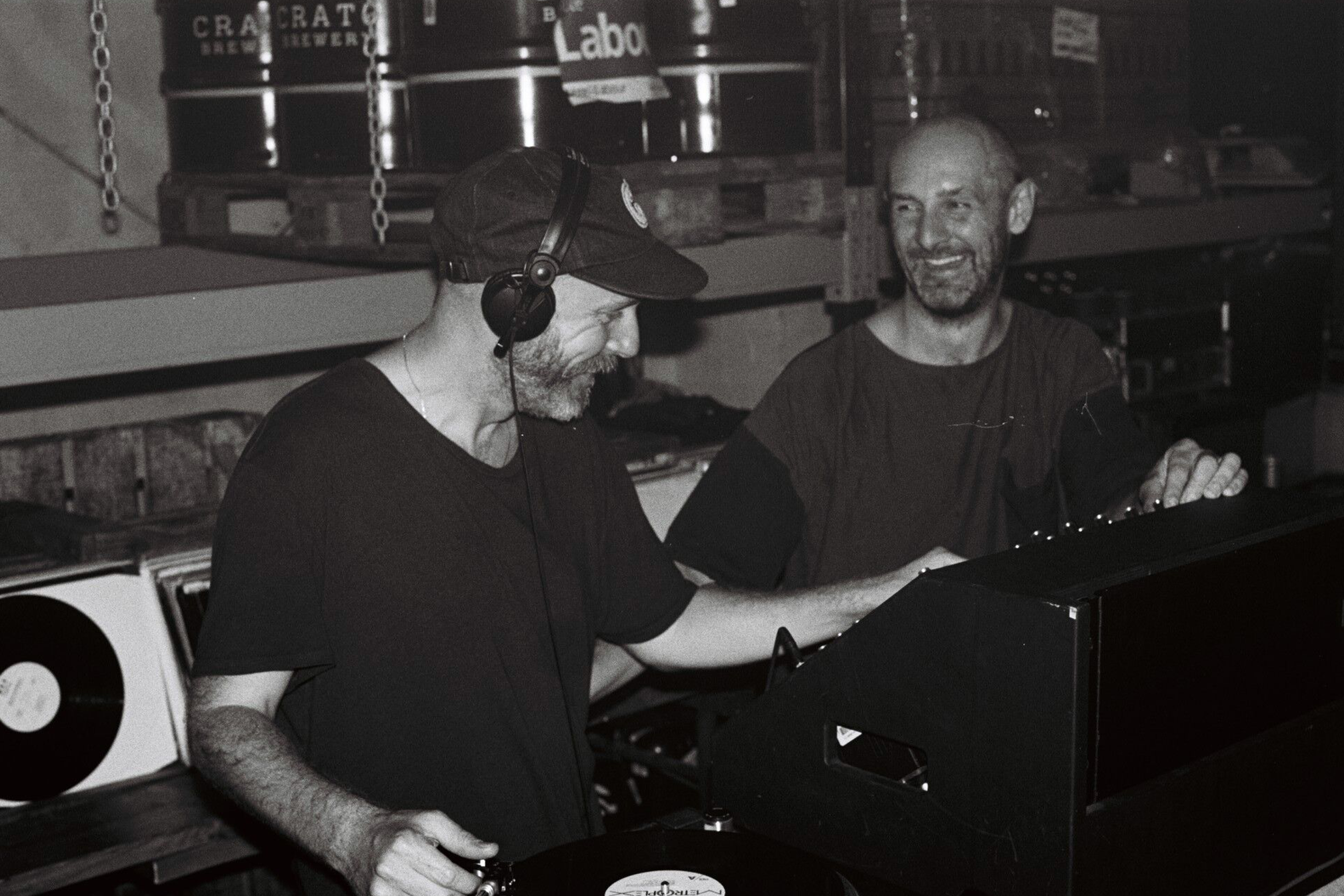 Features
Features
An oral history of Secretsundaze, London’s exuberant party institution
Celebrating 20 years in the dance, Katie Thomas tells the story of how Secretsundaze grew from a burgeoning knees up at 93 Feet East to the capital's worst kept secret
It's a hot Sunday afternoon in London in 2002, and the hollow sound of empty bottles clinking against each other echoes out from the recycling skips outside 93 Feet East. Two bleary-eyed, sleep-deprived club kids clamber out, clutching several empty spirit bottles they intend to use as makeshift vases. Having been out dancing until the early hours of Sunday morning, a young Giles Smith and James Priestley have dragged themselves out of bed to get the iconic Brick Lane venue ready for their new party, Secretsundaze.
20 years later, many years wiser and probably much less sleep deprived than they were for its initial outing, Priestley and James are now celebrating two decades of Secretsundaze. Earlier this month, a day-to-night 14-hour party at their long-time home Oval Space, saw them celebrate the milestone — with old friends like Joe Claussell and new friends like Ciel and Zeitgeist Freedom Energy Exchange. While on October 7, at the Southbank Centre's Queen Elizabeth Hall, Secretsundaze will perform a new project called the Spirit of Sundaze Ensemble, a live reimagining of electronic records that have proven themselves foundational across the party's rich history.
Always sticking to their M.O. of "following their hearts and not any hype," over the last two decades Priestley and Smith have carved a unique, consistent space amid the capital’s shapeshifting late-night landscape — it's rare to see a party last as long, and as strong, as Secretsundaze. From humble beginnings as school friends who discovered the magic of raving together, Priestley and Smith have established a beloved institution in their position as DJs, producers, promoters, label heads and audiophiles. "They’re purists to the core," longtime friend and collaborator Fred P told me from his home in Berlin a few years ago. "What they have together is so special."
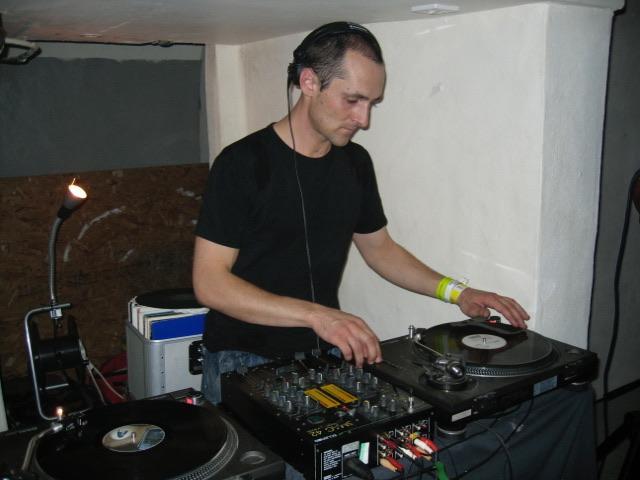
In early 2018, I met Priestley and Smith for the first time, at their (since closed) Secretsundaze Studios in London Fields. We had an in-depth conversation about their beginnings, how the brand had evolved and how they'd adapted to changes in London over the years. I didn't realise at that point that the fruits (read; my words) of that afternoon would not see the light of day until now, with additional context and updates from the last five years coloured in by a second conversation last month, at Giles's home in North East London. The result is a story crafted from these two conversations, five years apart, as well as our happily crossing paths on dancefloors, a live Q&A I hosted with Giles at Brighton Music Conference, and many emails and WhatsApp messages in between.
Priestley and Smith met when they were 15. During a school assembly one day, they struck up a conversation and discovered a shared love of music. Gravitating towards one another as alternatives, in what they describe as an otherwise conservative and academic boy’s school in Cambridge, the pair went to their first parties together; Milwaukee's in Bedford and thousands-strong raves at the nearby Kelsey Kerridge Sports Centre. "It was hardcore on the main floor with all the usual names like Slipmatt, DJ Randall, LTJ Bukem, DJ SS and DJ Rap," Smith explains. "But then there was a small room to the side, and that’s where I got my first taste of house music."
Read this next: Secretsundaze celebrates 20th anniversary with year-long party series
Though they went their separate ways for university, it was during a visit to see Priestley in Nottingham that Smith would play his first DJ set. Having started his record collection on a shopping trip with his babysitter when he was seven-years-old, Smith's pals were encouraging him to put his collection to good use. "Everyone was putting pressure on me to do it, even my Mum bought me a turntable," he says.
At the time, Priestley was running a party called Bassic at Nottingham venue The Bomb, with the afters taking place at a vegan café not far from the club. Priestley chuckles as he nudges Smith to tell the tale of this infamous debut. "The word would be 'playing' records rather than 'mixing.' I couldn’t mix at all," Smith admits. "Never mind the fact I was completely wasted."
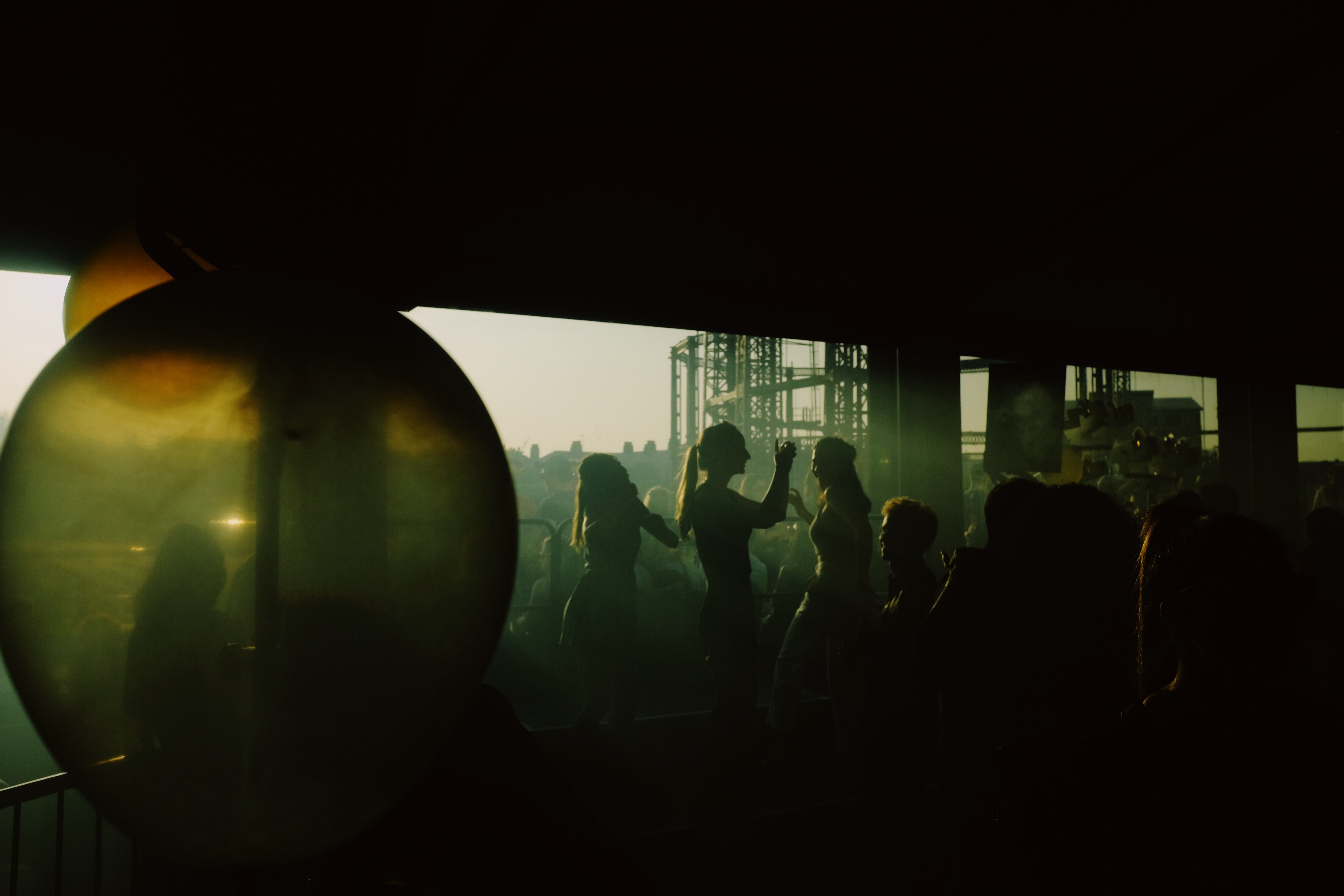
After graduating the pair moved to London, where they started going to the legendary Faith parties hosted by Terry Farley, Stuart Patterson, Dave Jarvis and Bill Brewster. Faith, they say, was a key motivator in the inspiration behind Secretsundaze. "Faith was a reincarnation of the Boy’s Own parties," Smith says. A fanzine, club night and label run by, among others, Farley and the late, great Andrew Weatherall, Boy's Own played a vital role in late '80s club culture. "They were so important," Smith continues. "They were one of the first London collectives doing really cool, risqué and open-air events. It was quite niche musically." Having arrived in London in their early 20s, in Priestley’s words, as "wide-eyed kids," Faith welcomed the pair with open arms and showed them what London had to offer. Smith would later become their resident — a steep learning curve as the collective were 10 years his senior.
In the early '00s, Priestley and Smith's school friend Kristophe Hofford met DJ Will B in Hoxton, where the latter used to hold "speakeasy-style basement parties." Hofford and Will B were the original instigators of Secretsundaze. Rather than first aiming for a Sunday party, Hofford tells me, their preferred spot wasn't available on a Saturday night. "But we quickly worked out it was a blessing in disguise," Hofford says. "Throwing a party on a Sunday was like a natural filter. You get people that really want to come down for that party, for the music and the vibe."
It wasn't long before Smith and Priestley joined the crew and Secretsundaze became four (before later becoming three again, with the departure of Will B). The first parties, hosted in the upstairs loft room at 93 Feet East, began as most do — with a strong DIY vibe, attended by friends and friends of friends, with everyone mucking in. The pair recall how the night before, a friend from school had prepared burger patties that would be barbequed and served with Brick Lane beigels.
"The afternoons were really quiet," Priestley says, thinking back. "It had this slow build which gave us the opportunity to play nice warm-up sets and stretch out. It was really good for us as DJs." The music policy was something they felt was missing from East London at the time—great quality underground house music, with those early hours also allowing space for soul, hip-hop, funk and more.
Read this next: "Dance like it's your final night on earth": 5 club crews look forward We Out Here
While Smith and Priestley's role in those early years was predominantly music-focused, Hofford took on many of the other tasks, including dressing the venue. The bottles-turned-vases swiped from the skips outside would be filled with flowers, collected from Columbia Road as the flower market was closing, with any remaining stems then taped to the walls. Hofford also got his hands on some camouflage netting, which they stitched strings of lighting into. "We had these mirrored columns hanging from [the netting] at one stage," Hofford recalls. "It was really beautiful, it would waft in the wind."
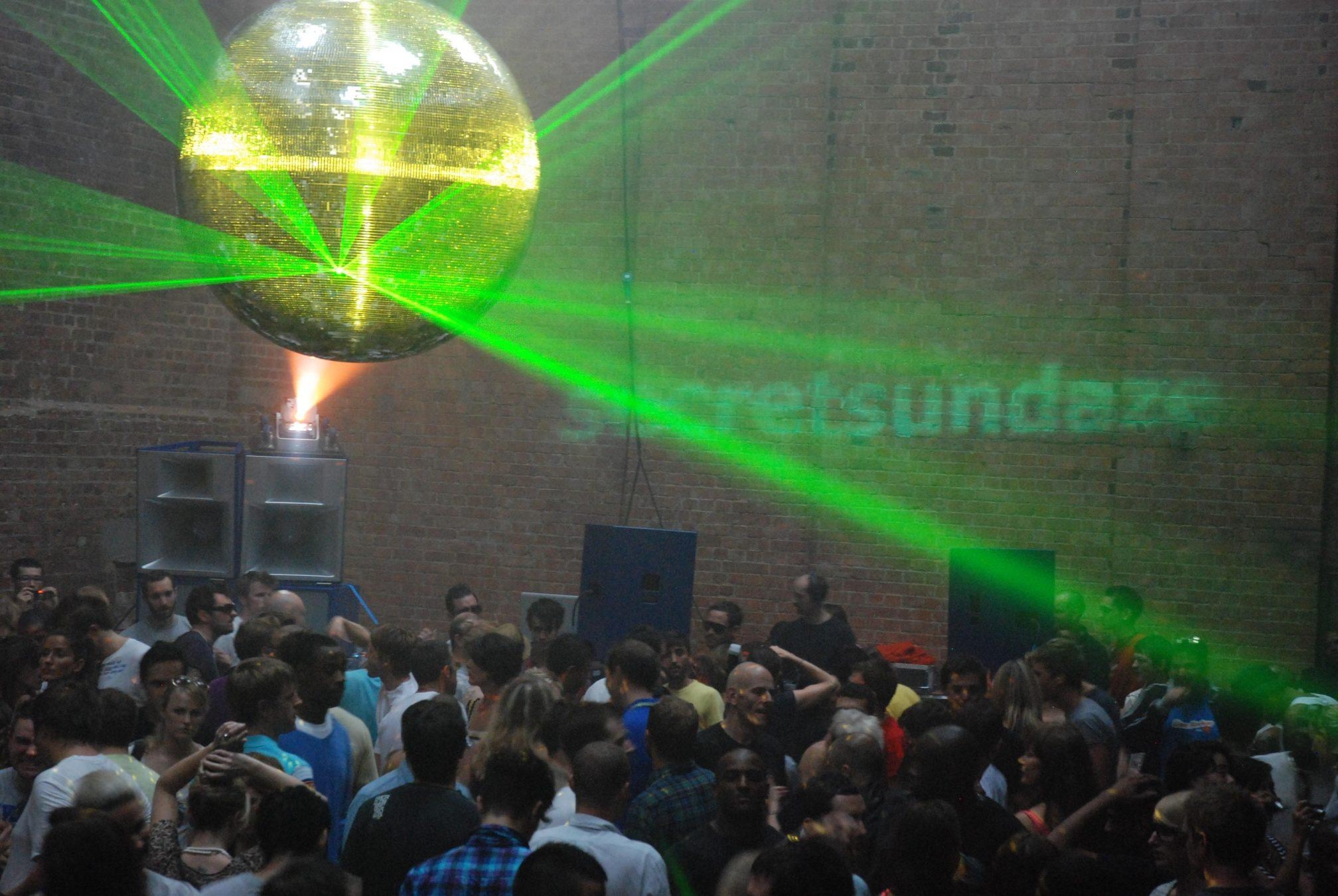
Soon after, Hofford's friend, Mirrorball Paul, who ran a second-hand furniture store in Hackney, said to him, "I've got something you'd like." On a trip to an old theatre in Glasgow, he'd collected a large vintage disco ball that would become the centrepiece of Secretsundaze. The disco balls got steadily bigger as the parties grew in popularity, before Mirrorball Paul worked out how to install electric wiring inside one of them. "It turned into a sort of Death Star," Hofford chuckles. "It had a smoke machine shooting smoke out of one side and a laser coming out the other."
The community feel of Secretsundaze began to plant its roots quite quickly. Smith remembers two women from New Zealand, who were in the UK on their travels, offering to help decorate the venue after coming to the first few parties. "People wanted to chip in," Smith says. "They drew these pictures, we still have them now, really rudimentary and quite crass pencil cartoons. We put them on the walls." Similarly, Priestley recalls, other partygoers painted huge canvases with sunflowers, which they would hang above the dancefloor to boost the sound and make the space feel more intimate.
After taking a break from September, by May 2003 the word about Secretsundaze was starting to spread; the parties went from 100 to 1000-strong within a year. It was the winter break that did it, says Priestley. "The first event that second year was rammed. Through the winter people had been talking about our parties, it was natural word of mouth. They wanted to bring their mates." A few parties into the second summer however and the 93 Feet East journey came to an end — they'd pushed the soundsystem too far beyond its limits. They were without a venue for barely a week before 93 Feet East's former manager got in touch with a new proposition a few minutes walk away: the high-walled beer garden at The Poet, which would become the stuff of Secretsundaze legend.
Read this next: 25 clubs you need to rave at in 2022
For Hofford, the realisation that they were on to something special came during those parties at The Poet. They would turn up at the venue around midday to start setting up, and there would already be people in the queue. By 2:PM, when the doors opened, the queue would be snaking down the block. Not many parties can attest to having a packed dance floor within minutes of opening, but that garden would be full by 3:PM.
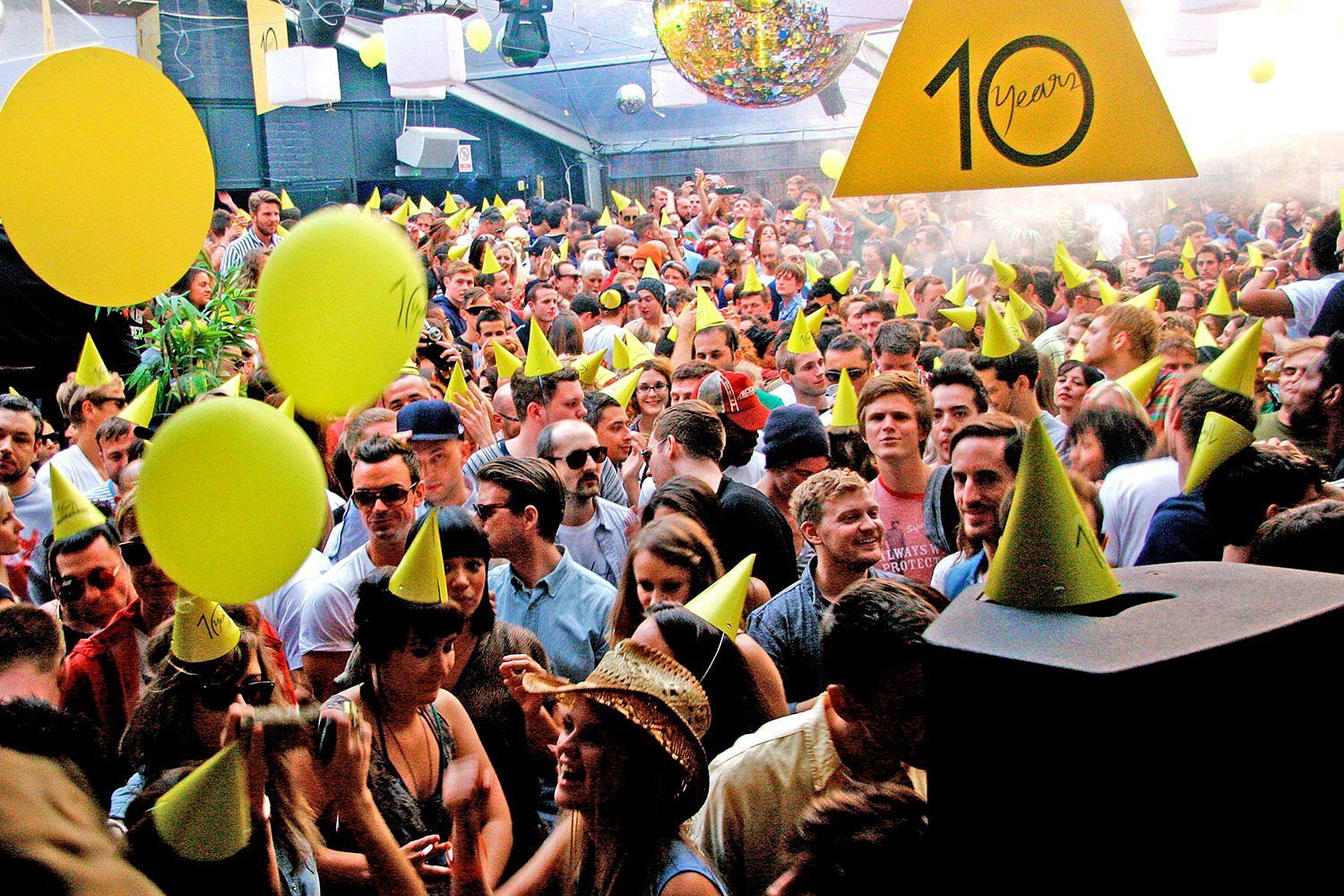
By two years in, Secretsundaze was a literal roadblock. Hosting one of their first parties in Ibiza, Ricardo Villalobos took the helm for a free event on the beach at Blue Marlin. Things got so crazy that day that the venue temporarily stopped hosting parties. "It was carnage," says Priestley, "no one could get near the venue, people were parking their cars in the middle of the road!"
Back at The Poet, the parties were consistently bringing in over 1,000 people every few weeks. On the other Sundays, the pub would be closed. One week, when a party wasn't scheduled and Peter the landlord was in Ireland, Luciano touched down at fabric. It was a golden era for the Cadenza boss, and for the Secretsundaze boys, who had somehow got hold of a set of keys for the pub, the opportunity was just too tempting.
Courtesy of a neighbour, Hofford tells me, the landlord caught wind of the unauthorised party. But, by the time he'd flown back from Dublin and brought the police along with him, there was nothing to be seen but the last of the soundsystem being packed away. Smith and Hofford had shot up a ladder and were hiding on the roof, and Priestley was hiding in the van behind a speaker, listening to the landlord rant to the police. "He was pissed off with us," Hofford says, "but in the end, we were on good terms. I think we even did a couple more parties there."
Hofford would eventually step back from Secretsundaze, it was time to do something different. "I feel like I hung my hat up on a high," he says. "I enjoyed it so much, and we're still the best of friends." When we talk about the record that most defines his time with Secretsundaze, a particular track immediately springs to mind — Ewan Pearson's epic, fizzing electro remix of The Chemical Brothers' 2003 track 'The Golden Path' featuring Flaming Lips.
There's a grainy 36-second video on YouTube titled Secretsundaze Shoreditch Street Carnival which Hofford instructs me to search for. MU's (AKA Mutsumi and Maurice Fulton) 2004 wriggling acidic electro stomper 'Paris Hilton' is playing to a sea of people bathed in red light while a giant disco ball hangs over the crowd, seemingly from thin air. The camera pans around to show camouflage netting stretching out from a DJ booth which, Hofford tells me, was set up in an old army fire truck called a Green Goddess.
"It was just outside Village Underground," he says. "We rolled [the truck] down there and put a big soundsystem down the street. The council weren't told about it, nor were the police. I could hear them wandering around asking for me. They didn’t know what hit them." Hofford spoke with the council and reassured them that, mark his words, the party would stop at 10:30 PM on the dot. Sure enough the Secretsundaze crowd, respectful as ever, dispersed right on time. But shortly before curfew, Hofford remembers with crystal clarity that Ewan Pearson remix dropping. "We had 4000 people dancing on that street and it just went completely mental," he says.
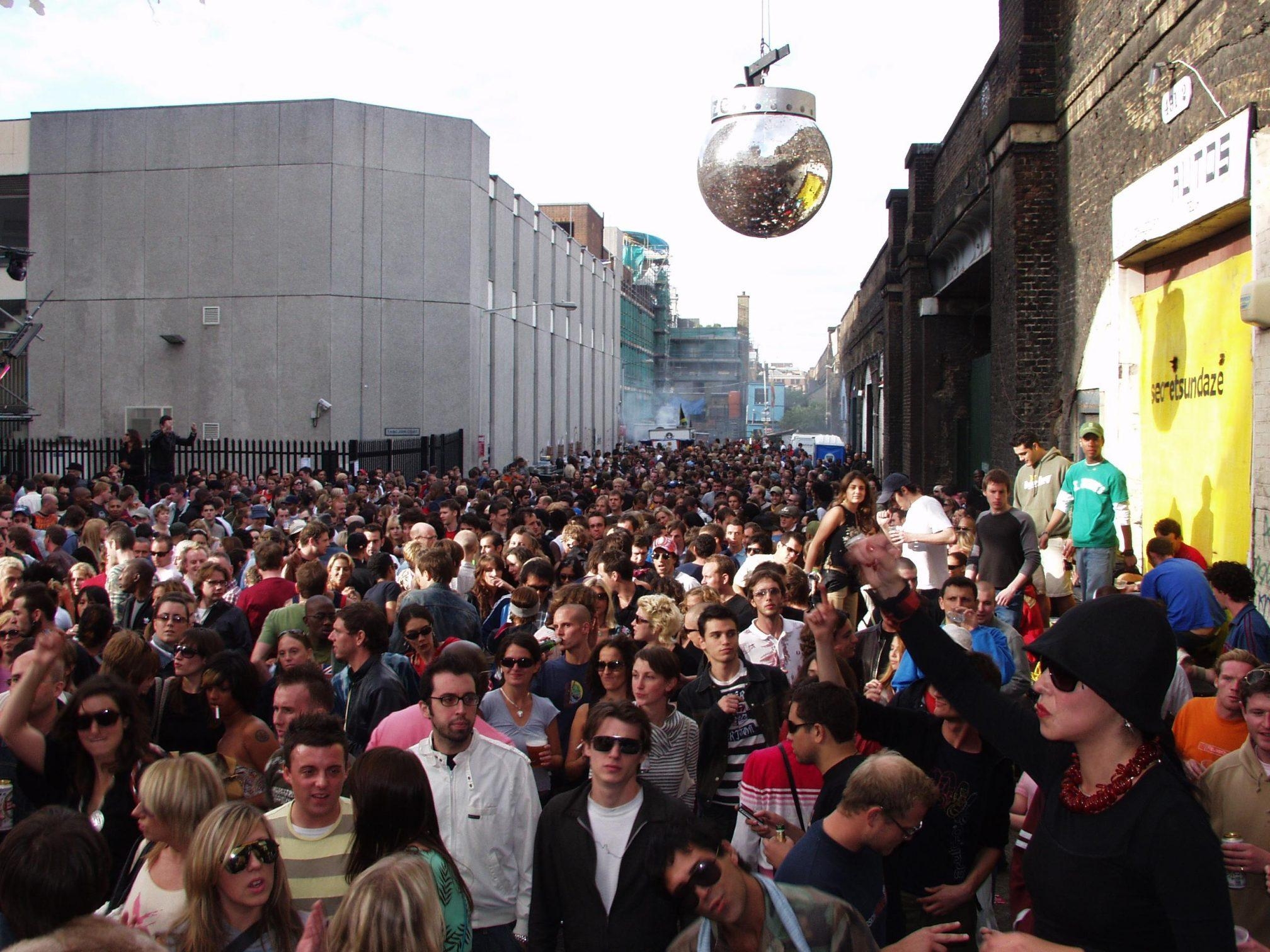
Carol Murdoch and her husband Chris met many years ago at a rave at the Malcolm X Community Centre in Bristol. As free parties became more scarce and raves began to move into licensed venues, the couple moved to London, following the clubs. "It was our life," Carol tells me. "We loved clubbing and London was the place to do it." They got married and had kids, so began an inevitable hiatus from partying. Years later, they heard about Secretsundaze from a friend. "They don't play just one type of music," Carol adds, now with a decade of Secretsundaze parties under her belt — the couple still go to almost every party together. "It's about a party, a feeling and creating a space for people to dance. The music all has a human element to it, something you can connect to."
Babysitter secured and grateful for the Sunday afternoon timing to be fit for work on Monday, the Murdochs went to their first Secretsundaze party on September 18, 2011. Priestley, Smith and Zip took over Village Underground and Carol remembers getting a copy of the 10 Years Of Secretsundaze compilation CD with her ticket. "I remember a mixture of people, a mixture of age groups, these people were part of a scene or a movement. I really felt that. It was more than just going to a party."
One of the other things Carol remembers is that Village Underground was decorated with lots of bright yellow balloons stamped with the Secretsundaze face. For 20 years now, in a run that began with Hofford, the production element at Secretsundaze parties has always been key in making the events stand out —something that would ramp up even more on Halloween. In 2014 the theme was "dead famous," in 2015 it was "Carnival du Freak" and in 2016, Oval Space was transformed into the "mad scientist lab."
It was Halloween 2017 when event styling specialists Adrienn and Laura of Chou Rouge Creative first came on board, for the first of several "Club Kids" Halloween parties. The original club kids were stomping around New York City's club culture in the late '80s and early '90s, known for loud, outrageous looks and flamboyant behaviour. It was Adrienn and Laura's favourite theme to date. "We loved making the props for that party," the pair tell me. "They allowed us to create something mega quirky, stylish, super cool and visually engaging that reflected the true NYC club kid spirit."
Read this next: Secretsundaze co-founders played a six-hour live stream at Oval Space to fundraise for their crowdfunding campaign
Priestley and Smith "always have a clear vision for what they like in terms of dressing," Chou Rouge continue. "The old school giant balloons, for example. But this year we're trying to incorporate and play with new styling elements. Our goal is to create something cool, welcoming and warm, where the clubbers could really feel the love and care from both us and the promoters." Adrienn and Laura had been attending Secretsundaze prior to working on the production. They had always loved the parties, for the "mature music lover" crowd and the focus on quality house music. "You can feel the passion [Priestley and Smith] bring to each night," they say. "That hasn't changed a bit over the years."
Between 2018 and 2022 I have interviewed eight people about Secretsundaze. There is a common theme: Priestley and Smith are good people, who care about good music, on a dancefloor that attracts good people and welcomes them with open arms. "They are the heart and soul," Fred P says. "You go to a party and immediately you feel it's a community that comes together because they love the music. The people are so open."
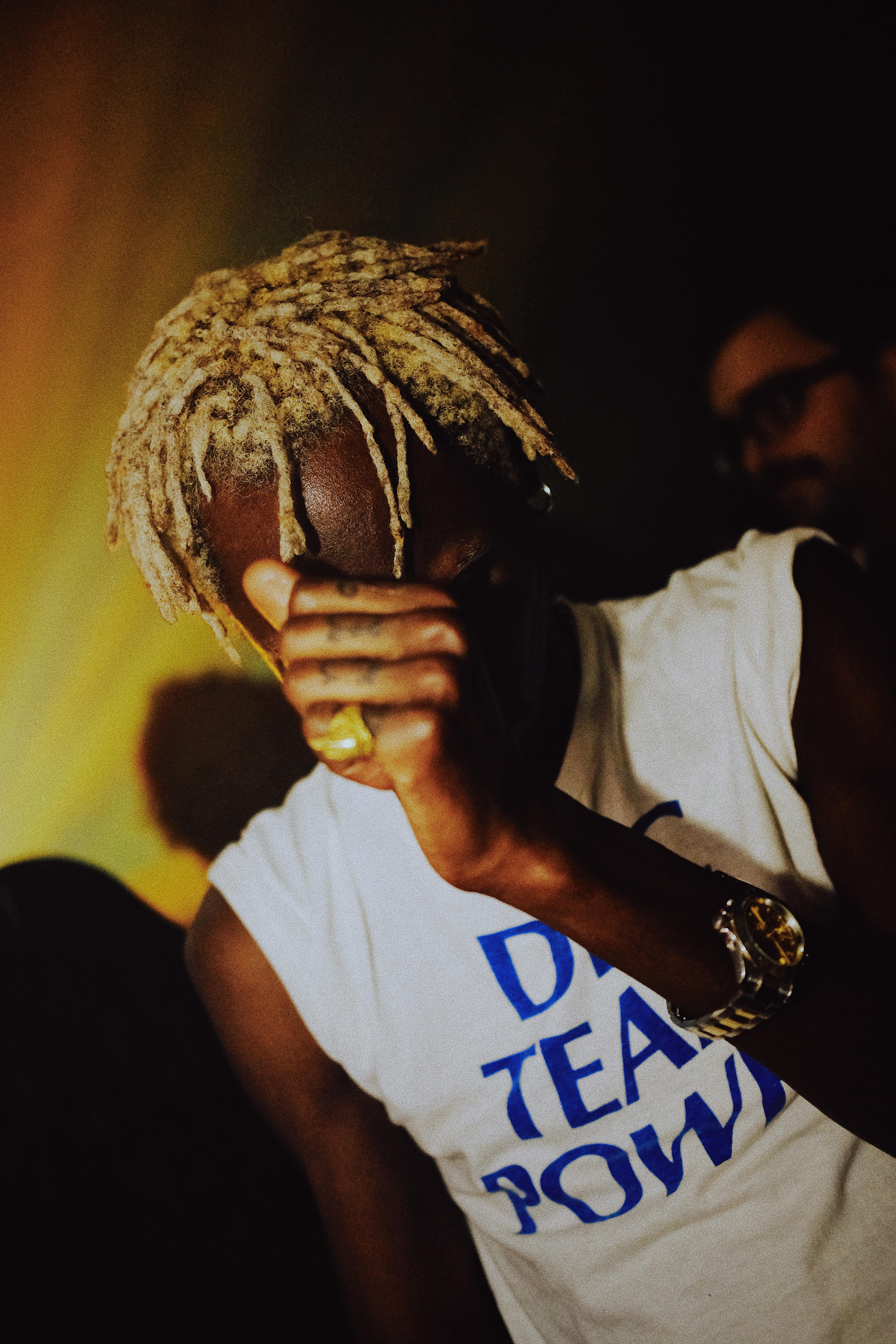
At one of their first parties back after lockdown, Smith was stopped by a man on the stairs at Oval Space. He told Smith that he'd been coming to Secretsundaze since the beginning. As a gay man, he said, he doesn't go to many straight parties, but Secretsundaze is one he'll always attend and feel comfortable doing so. "We pride ourselves on knowing our regulars so I was surprised not to recognise him," Smith says. "But it was beautiful to hear, he really got it."
In 2018, Priestley and Smith knew of at least five couples who met on a Secretsundaze dancefloor and are now married. Perhaps in 2022, that number could be higher. The pair have both observed that there are a few long-time regulars that haven't come back since lockdown. But that's natural, they acknowledge, peoples' lives are changing, and as they move away from clubbing, Secretsundaze will welcome new people in.
With an average ticket buying age of around 28, 29 for the last few years, Smith and Priestley can see they have a regular influx of younger clubbers coming to the party. "We've worked hard to introduce what we do to young people," Priestley explains. "It's really important. And we pride ourselves on having a genuinely mixed crowd. I think that's what can set us aside from parties in London. A lot of people in those crowds often dress the same, feel the same, there's a certain clubbing crowd. That’s not the case for us." Hofford agrees, describing Secretsundaze as "super diverse, very open and embracing."
As a Black woman, Carol seeks dancefloors where she feels safe, secure and where there are other Black people in the space with her. "Most clubs are full of white kids," she says. "So going to Secretsundaze is particularly special for me, because I feel it's able to appeal to lots of different people." DJ, producer and presenter Shy One, who played her first Secretsundaze show in recent years, agrees. "The lineups attract a good crowd," Shy One says. "It feels a bit more grown and sexy, a more considerate, respectful and open crowd." In the wake of the Black Lives Matter protests in 2020, when organisations across the world were pledging to make positive change, it was an important moment of reflection for Priestley and Smith. "We’ve always had a strong passion for the roots of house music, which is Black music," Priestley says. "We’ve been playing Black music to people for 20 years now, even longer. It was important to us that we reinforced that recognition."
In 2022, Priestley, who now heads up most of the programming, focuses on supporting upcoming artists. Rather than paying for one big headliner, he would prefer to book several rising artists, something that their day-to-night parties, with longer running times, help to facilitate. "When people are so skint at the moment," Priestley says, "it doesn't seem right to give one DJ thousands of pounds to come and play records for two hours." Over the years, the increase in competition and soaring artist booking fees has also led to an increase in ticket prices, which Priestley sees as unsustainable, and adverse to social mobility. “So many clubbing crowds in London are white and middle class,” he says. "That’s nothing to write home about, it’s not positive at all."
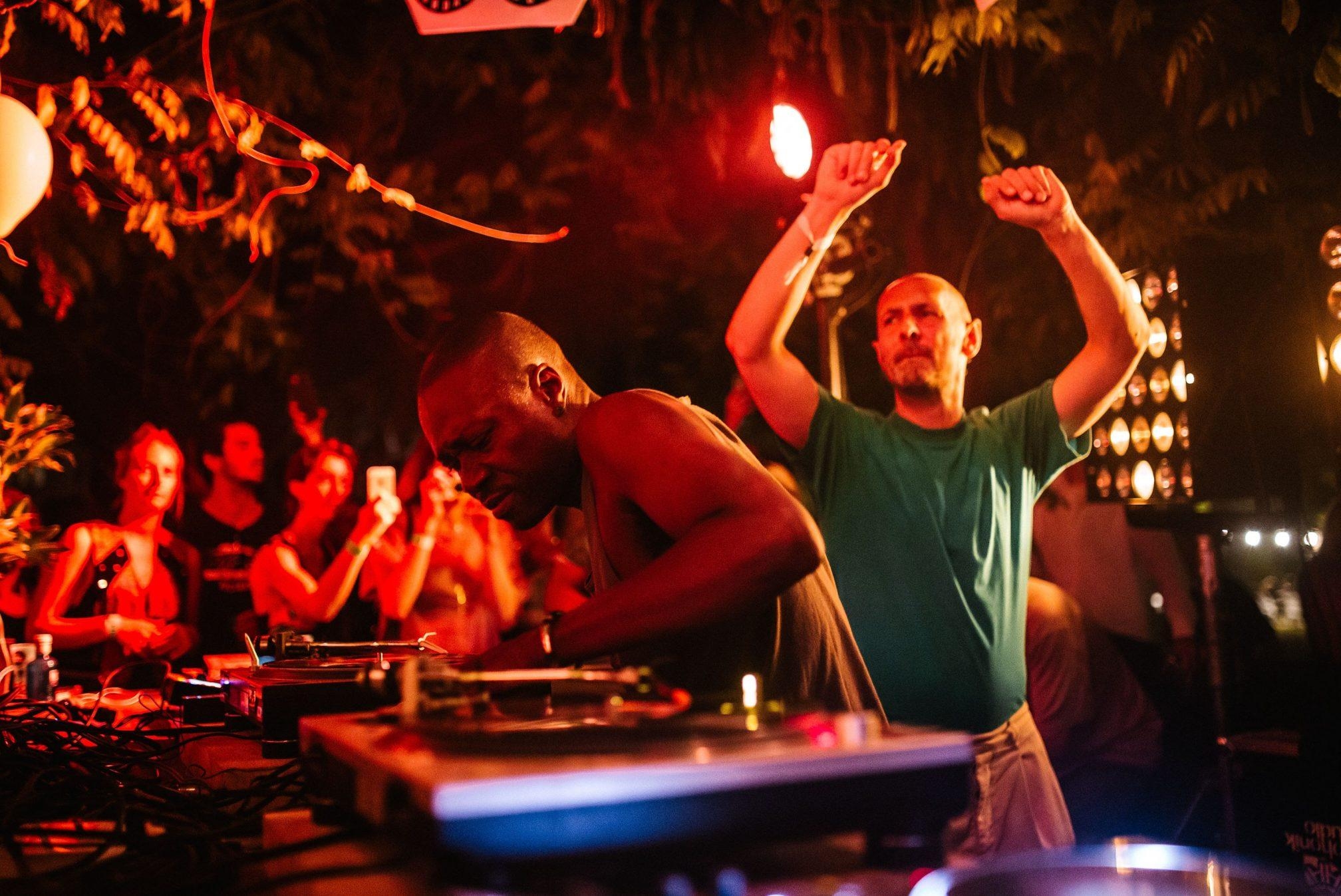
Coming out of lockdown after a slower pace of life has also meant some changes in Smith and Priestley's day-to-day. Priestley isn't touring so often now, so he can spend more time at home with his family. While Smith, following a bout of COVID-19, an ADHD diagnosis and the time and space of an extended period of being at home, decided to go sober. "I just didn’t feel like drinking and partying as I had done over the years," he explains. "I want to look after myself now." He's also started studying psychotherapy, with an aim to continue doing music alongside. In a word, the pair agree that post-lockdown life is a life more "measured."
The last few years have been a period of change and reflection for Secretsundaze as a record label too. Starting back in 2007 with a series of mix compilations, the Secretsundaze Recordings roster includes dance music legends like Ron Trent, Chez Damier, Fred P and the late Marcus Intalex.
Since our last conversation in 2018, Priestley sees the label as having had somewhat of a relaunch. Historically they have mainly focused on the mix CDs and club-focused 12-inches, whereas now they look beyond what they'd play in a DJ set and to the myriad other sounds that they love. There were the contemplative textures and moody breaks of Eliphino's 'Breaking Up Is Hard' EP in 2019, woozy reggaeton and electro-leaning cuts from Silvestre, and most recently, 'Kreuzberg Kix Vol 1' from Zeitgeist Freedom Energy Exchange with Wayne Snow. The latter is a step closer to the warmth and soul of a Secretsundaze record, with bright jazz inflexions and zippy percussion.
Read this next: DJs share tips for going sober in the rave
Which brings us to the Spirit of Sundaze Ensemble, the live concept that Priestley first had the idea for over a decade ago when they were thinking about ways to celebrate their 10th birthday. It's a fresh new direction as they move into this 20-year-old iteration of the brand. The project is headed up by Priestley, who plays in the ensemble with an MPC controller, and Smith did much of the groundwork with A&R for the records that would form part of the show.
Spirit of Sundaze launched in July with the first single, a rework of Photek's 2000 seminal house track 'Mine To Give' featuring Robert Owens. In the warmth of the synths and Owens' rich vocal, 'Mine To Give' encompasses much of what characterises the Secretsundaze sound. The ensemble's rework is a languorous, synth-pop reimagination that, as Priestley explains, "finds the best part of the original work and gives them more space to shine."
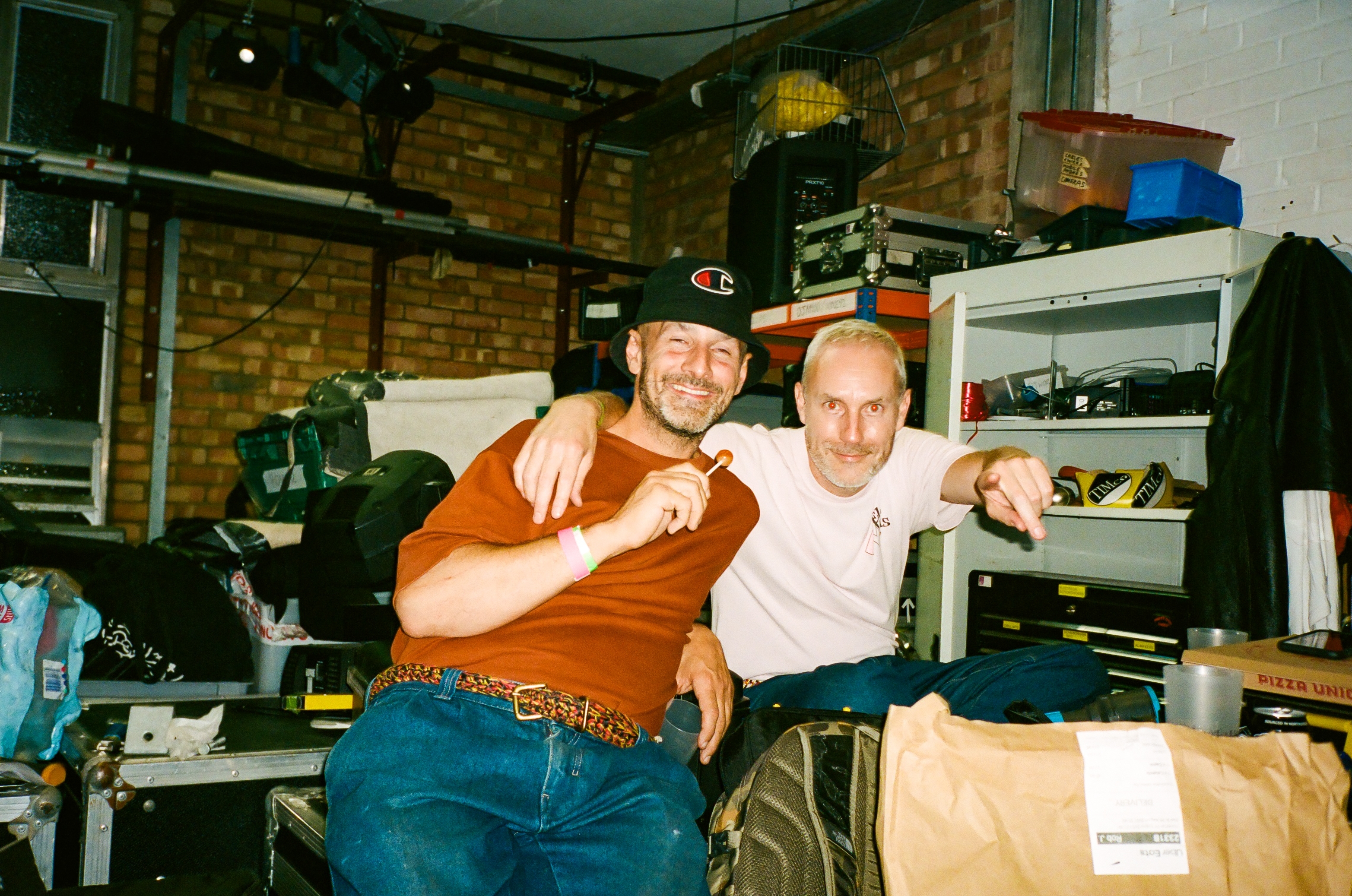
After such a long period of DJing and hosting parties together, I wanted to know if Priestley and Smith have any pre-show rituals that have formed over the years. Not really, is the answer, with their defining pre-show feeling as promoters being "quite hectic." Knowing each other's taste and style of playing inside-out as they do, they'll spend hours in their respective homes before a show selecting records. "I always like to familiarise myself with them by touching them briefly," Priestley says. "It helps put them back in my head." There's also the Secretsundaze incense, which sets the tone for the night as they get it burning before the doors open. The Secretsundaze smell is by the Japanese brand Kuumba and the scent is Nagchampa; a popular incense of Indian origin with a sandalwood base, that's known for its purifying qualities.
On November 23rd, 2019, the Murdochs were headed to The Pickle Factory with a big crew in tow. The occasion was Chris's 60th birthday. It's one of Carol's most treasured Secretsundaze memories — how welcoming Smith and Priestley were and how warmly they brought the couple and their friends into the fold. "Secretsundaze is so special to us because of the people we've met over the years," she says. "It really is a family." Sometimes, Carol says, people at the party will be surprised when they realise her and her husband's age. "I don't really think about it until I see it on their faces," she says. "Because to me, I'm still just a young person who loves going out clubbing and dancing. Secretsundaze affords me that, enables me to do that. I'm so grateful for it."
Katie Thomas is a freelance writer, follow her on Twitter


